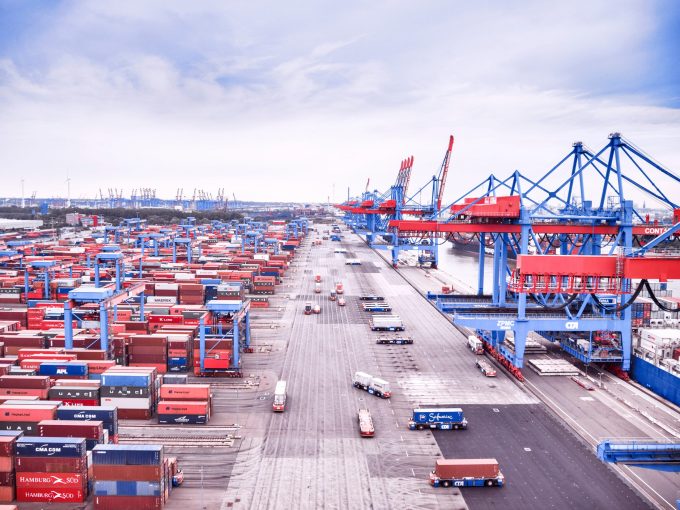Grape demand: carriers line up for a bite as South African export season begins
South Africa’s grape export season has begun, and ocean carriers are lining up for a ...
BA: WIND OF CHANGEMAERSK: BULLISH CALLXPO: HEDGE FUNDS ENGINEF: CHOPPING BOARDWTC: NEW RECORDZIM: BALANCE SHEET IN CHECKZIM: SURGING TGT: INVENTORY WATCHTGT: BIG EARNINGS MISSWMT: GENERAL MERCHANDISEWMT: AUTOMATIONWMT: MARGINS AND INVENTORYWMT: ECOMM LOSSESWMT: ECOMM BOOMWMT: RESILIENCEWMT: INVENTORY WATCH
BA: WIND OF CHANGEMAERSK: BULLISH CALLXPO: HEDGE FUNDS ENGINEF: CHOPPING BOARDWTC: NEW RECORDZIM: BALANCE SHEET IN CHECKZIM: SURGING TGT: INVENTORY WATCHTGT: BIG EARNINGS MISSWMT: GENERAL MERCHANDISEWMT: AUTOMATIONWMT: MARGINS AND INVENTORYWMT: ECOMM LOSSESWMT: ECOMM BOOMWMT: RESILIENCEWMT: INVENTORY WATCH

Congestion issues continue to plague Hamburg’s flagship automated Container Terminal Altenwerder (CTA), due to operator HHLA’s modernisation programme, forcing carriers to drop sailings into Germany’s largest port.
Jan Kolditz, director of IT and terminal development of HHLA, told The Loadstar on the sidelines of the recent World Ports Conference in Hamburg that CTA was replacing its entire fleet of ship-to-shore cranes.
“All 14 are being replaced as they have come to the end of their working lives – they have been operating CTA since it opened in 2002. The oldest are being dismantled and the new units are coming in,” he explained.
The new cranes will not be manned, but will be remotely operated from an office as part of HHLA’s automation investment project across the port. When CTA opened, its automated container yard was something of an industry first, but at that time port engineers had to yet fully automate ship-to-shore crane operations, which has been rectified in the ensuing two decades.
Hapag-Lloyd, which owns a 25% stake in CTA, said that in combination with backlogs associated with the three-day US east coast stoppage and the Red Sea crisis, the CTA modernisation programme was forcing it to drop some Hamburg calls, switching them to Wilhelmshaven, in which the carrier also has a 30% stake.
“The situation in the Red Sea, the delays in US ports due to strikes and ongoing construction at the berths are causing ship delays at CTA. Despite full use of all available resources, the current volume of export deliveries is exceeding CTA’s storage capacity.
“In recent days and weeks, numerous measures have been implemented, including reallocating vessels between terminals and using external storage facilities to maintain the cargo flow.
“CTA has today introduced temporary restrictions for export container deliveries, the delivery of export containers will be regulated on a vessel-specific basis,” it said.
As a result, it has switched the Hamburg call of its India/Middle East-Europe IOS service – which is operated in cooperation with CMA CGM, ONE and OOCL – to Wilhelmshaven, with the first call scheduled to the 8,600 teu Frankfurt Express, due to arrive at Wilhelmshaven on 13 September.
According to Hapag-Lloyd, CTA’s yard is currently at 80-85% utilisation.
According to the eeSea liner database, the terminal acts as the main Hamburg hub for four THE Alliance transatlantic services and another transatlantic service jointly operated by Hapag-Lloyd, Cosco and OOCL.
It also has two Asia-Europe services – a call on ONE’s standalone extra loaders and on THE Alliance’s Asia-Europe-North America FP1 round-the world string.
Alongside a couple of Europe-South America services, it is also a crucial link into the Baltic and Scandinavia region, with 23 feeder services from eight carriers.
Check out today’s News in Brief podcast, for a quick catch-up on the industry
Comment on this article